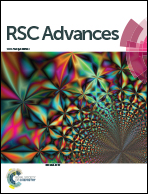Competitive adsorption/desorption of CO2/CH4 mixtures on anthracite from China over a wide range of pressures and temperatures
Abstract
The adsorption/desorption of CO2/CH4 mixtures with three different volume fractions was investigated at 294 K, 311 K, 333 K, and 353 K with pressures of up to 70 bar on anthracite from China using a high-pressure volumetric analyzer (HPVA II-200). For the mixtures, the total excess adsorbed amount decreased as the temperature rose. In addition, it displayed an upward tendency with an increase in the CO2 fraction in the feed gas. The excess adsorbed amounts of the component gases were calculated on the basis of the composition of the gas phase measured by gas chromatography. For a mixture with a CO2 fraction of 50%, relatively good adsorptivity for CO2 was displayed at low pressures (<30 bar), whereas better adsorptivity for CH4 was displayed at high pressures. When the CO2 fraction in the feed gas increased from 20% to 50%, the excess adsorbed amount of CO2 increased dramatically, whereas the excess adsorbed amount of CH4 decreased slightly (6.3%). When the CO2 fraction increased from 50% to 80%, the excess adsorbed amount of CO2 increased substantially, whereas the excess adsorbed amount of CH4 decreased drastically (42.4%). On the basis of the experimental data, the total excess adsorbed amount can be well simulated by the Ono–Kondo (OK) lattice thermodynamic model with an average deviation of 6.4%. Moreover, the excess adsorbed amounts of the individual components have also been predicted using the OK model.


 Please wait while we load your content...
Please wait while we load your content...